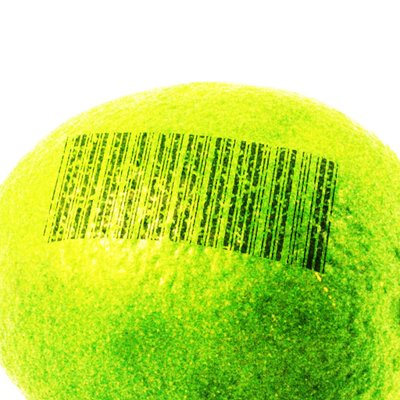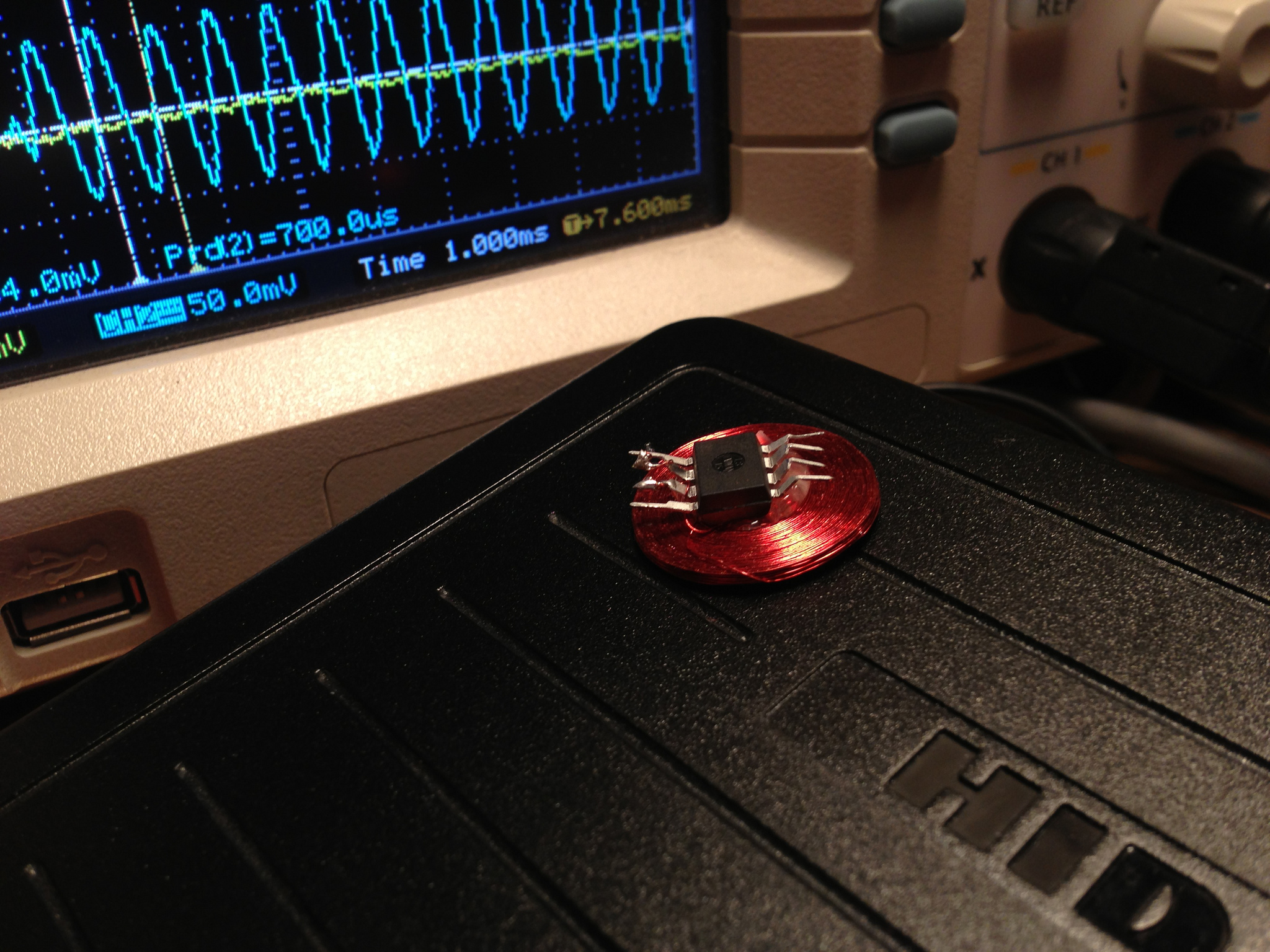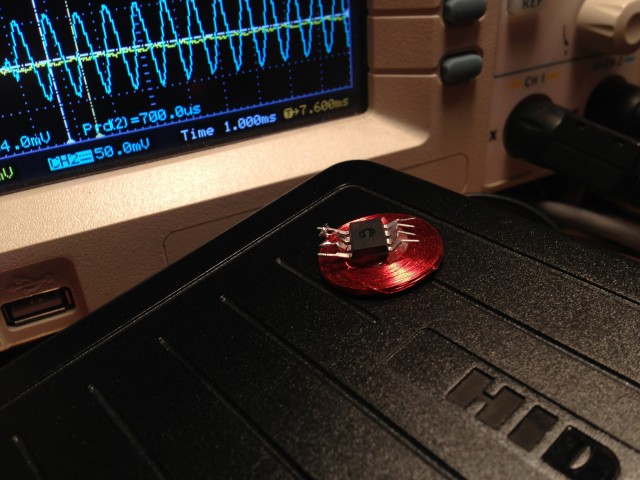Way back in 2008, I posted a writeup about using an AVR microcontroller as an RFID tag. Since then, it’s been great to see many people pick up this code and build their own DIY RFID tags.
In my original project, I was just interested in using an AVR as a way of emulating any tag protocol I wanted, even proprietary protocols like the HID cards that are so common for door entry. But a general purpose microcontroller really lends itself to making even more interesting tags. For example, imagine an action figure that has different poses which trigger microswitches that can be read by the AVR. It could report a different RFID code depending on which pose the action figure is in. This kind of very low-power physical computing is really interesting to me.
Trammell Hudson recently took a big step in this direction, in the name of creating a “multipass” card which could stay in his pocket and pretend to be any number of other cards. His original idea didn’t quite work out, due to limitations in the HID readers. But along the way, he created an optimized version of the AVRFID firmware which uses much less flash memory, and he ported it to C so that it can be more easily extended and modified.
He made this posible by very carefully choosing the instructions in the inner loops, creating a state machine that just barely fits within the available clock cycles:
One issue with programming HID Prox compatible cards is that the AVR’s RCALL and RET instructions are quite slow — 3 and 4 clocks respectively — so making a function call and returning from it requires seven clocks and would cause errors in the RF waveform. To get around this, Beth expanded all of the code inline to produce a single function that bit-bangs the coil loading with NOP‘s between each cycle. The 20-bit manufacturer ID (0x01002), 8-bit faciity code and 16-bit unique ID, all Manchester encoded, required 80 instructions per bit for a total of 3700 instructions out of the Tiny85′s maximum of 4096. Supporting 34-bit cards would not be possible with this design, much less multiple card IDs!
While RCALL/RET are out of the question, I noticed that IJMP is only 2 clocks. This means that the CPU can do an indirect jump to the value in the 16-bit Z register in enough time to be ready for the next FSK cycle. If we know where to go, that is… The LPM instruction takes three cycles to read a byte from flash into a register, which just barely fits during the idle time during a FSK baseband one. Loading the Z register for LPM takes at least two clocks (since it is really the two 8-bit registers r31:r30), which means the pgm_read_word() macro in avr/progmem.h won’t work. While the rest of the firmware is in mostly normal C, I resorted to writing assembly to interleave the coil toggling with the operations to determine the next output state and make the appropriate jump. If you want to follow along, the source for the RFID firmware is available in rfid/avrfid2.c.
His post covers a lot of ground, including how to connect an off-the-shelf HID card reader to a computer, and how to repeatedly program the AVR using a Bus Pirate.


